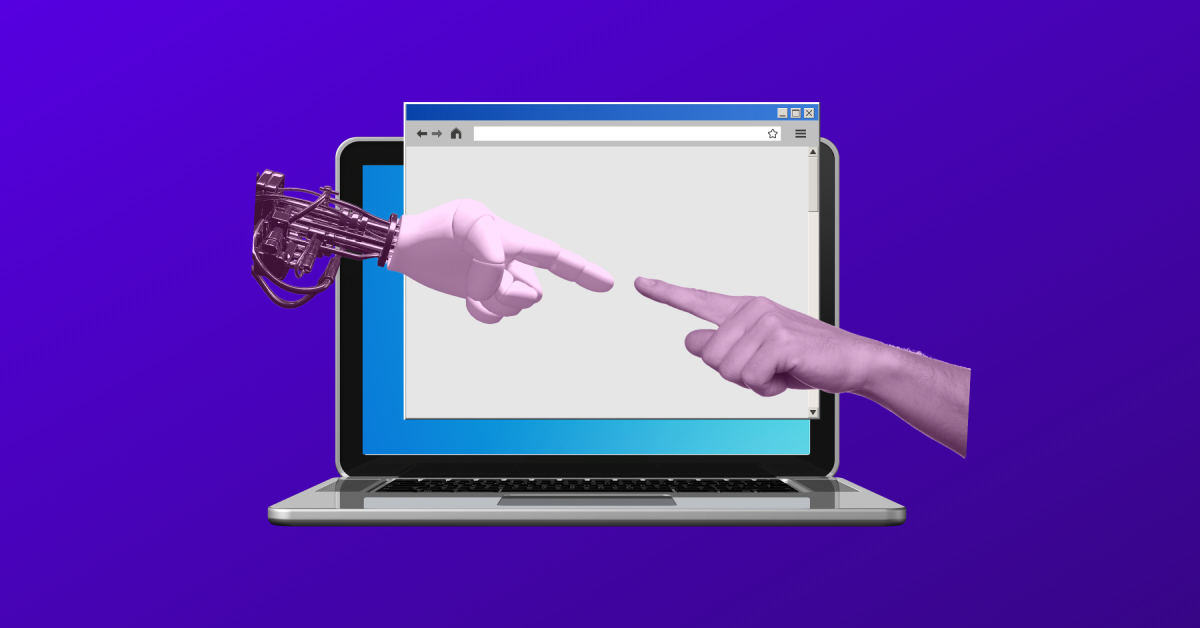Are you looking for a powerful way to understand your customers? Do you want to know what they do to engage with your eCommerce business?
Of course, every business wants to give the absolute customer experience to consumers and website visitors.
And you're lucky because there is a way to learn more about your customers. And that's through customer journey mapping!
Spoiler alert: A customer journey map can help ensure a productive and smooth experience on your website. 👀
So... we'll break it down into 7 steps.
- Choose the map objective
- Create a customer persona
- Understand the goals of your target market
- Identify the touchpoints
- List the limitations
- Take the actions
- Measure results
Sounds exciting, right? And if you want to learn more, let's discuss...
- What is eCommerce customer journey mapping?
- Why do you need to map out your customer journey?
- 7 ways to create an engaging customer journey map.
So, are you ready to improve customer experience and increase your conversion rate? Let's start!
What is customer journey mapping?
Customer journey mapping is a visual process of how your customers are taking action on your eCommerce website.
It's a way to identify your customers' processes or actions when shopping in your online store.
This will allow you to create an engaging customer journey, leading them to take your desired action.
This is what it usually looks like.

(Source)
As you can see, it's very detailed and categorized based on the current customer needs. You can see the steps needed once the customer moves from one course to another.
That's what you're going to do with your customer journey map, too. But first, let's see...
Why should you map out your customer journey?

Creating a customer journey map is essential because it will help you...
1. Enhance customer experience
If you know the customer needs and the actions they need to take to fulfill their goals... you can improve their shopping experience.
For example, they want to purchase your products. You must create a specific customer journey to make it easier for them.
Another benefit is you can...
2. Learn more about your customers
To create long-term plans for your business, you must understand your customers deeper. And you can achieve this by creating a customer journey map.
Because when mapping out the customer journey, you need to study who your customers are to create an accurate customer journey map.
This can also...
3. Improve your business
Once you map out your brand's customer journey, more customers will have a smooth shopping experience.
As a result, you can improve the results of your business. Whatever your goals are, they will be achievable because you know what your customers need to do to fulfill them.
If these benefits sound fantastic to you, let's now talk about...
How to create a customer journey map?

1. Choose an objective for the map
The first thing you need to do is to choose an objective. You can't create one customer map for all your customers because they have different goals for using your website.
So, you need to choose an objective. This will help you determine each customer journey map's start and end goal.
For example, you want to increase your brand's sales and take your potential customers to the loyalty stage. You can create a customer journey map focusing on that.
Remember, there are different customer journey stages. The most common stages are: Awareness > Interest > Consideration > Purchase > Loyalty
So, your customer journey map will also need to consider that. Are they in the awareness stage? Consideration? Or do you want to convert them into loyal customers?
Once you have the goal for your customer journey map, you need to...
2. Create a user or customer persona
What is a user or customer persona? A customer persona will help you identify who your customers are, their needs, and what they're trying to achieve.
If your business has been up and running for a while, you probably have customer data to use. You can check your Google Analytics, too.
But if your business is still new, you might need to create your own persona. This is a fictional character that represents your target customer.
.png_%3b%20filename_%3dutf-8%27%2720211006_db_completedigital_1200x628_img_v3%2520(3).png)
As you can see, this customer persona has:
- (Fictional) Name
- Age
- Gender
- Profession
- Challenges
- Customer pain points
- Interest
- Personality
But you can make it more detailed by adding other information, such as location, goals, or anything that will contribute to mapping out their customer journey.
For example, you're targeting Gen X. Their customer journey needs to be more unchallenging, especially if they're not tech-savvy. If you're targeting Gen Z, there's also a different customer journey.
If you have a deeper understanding of who your target market is, it'll be easier to map out their journey.
Another thing that could help you know your persona more is if you...
3. Understand your target market's goals
You may know your target customers, but it's still important to know what they want. Prospects don't have the same customer journeys.
It's best to ask your customers what are their common goals when they're visiting your website. Here are some questions you can ask them:
- What are they trying to achieve when they visit your website? Is it to contact your customer service? Browse your products?
- If they already bought from your eCommerce store, what helped them decide?
- Ask them how easy it is to use your eCommerce website.
- How was the customer support they received?
- How did they hear about your brand?
These are important questions because they will give you an idea of what they're trying to achieve on your website.
This will help you understand why they're on your website. And you can create a more detailed eCommerce customer journey map.
Now that you know your customer's objective, persona, and goals...
4. Identify touchpoints
Touchpoints are actions based on your customer's journey outside or within your website. This is also essential because it will help you learn more about how they engage with your brand.
What are the actions they're taking during the awareness stage? How about post-purchase? You need to analyze this so you can optimize these touchpoints.
If there are too many touchpoints, you might need to lessen them. Why? Because it means it's taking them longer to achieve their goals.
Or, what if many customers stop at a specific touchpoint and don't get into the next step? You also need to check on that.
So, what are these touchpoints? For customers in the awareness stage, the best touchpoints can be...
- Social media platforms
- Paid advertisements
- Search engine results
- Referrals
- Reviews or other media mentions from third-party websites.
For customers who are already considering purchasing from you, it can be:
- Live chat
- Phone call
- Website
- Newsletter sign up
- Product videos
And once the customers have purchased from you, the touchpoints for customer retention can be:
- Customer reviews
- Valuable eCommerce blogging
Here's an example of a customer journey map that shows the touchpoints for each stage:

(Source)
As you can see, in the awareness stage, the touchpoints are from social media. While for the consideration stage, there are inquiries via email and phone calls.
By identifying these touchpoints, you can create seamless eCommerce customer journey maps!
It's also essential to...
5. Take note of the limitations
Based on the touchpoints you listed, you must also take note of the limitations that stop you from creating a good customer journey map.
For example, you noticed that only a few people purchase from your eCommerce store. And that's even after they enquired about your products.
You need to identify the problem because it might be because they feel the lack of customer support. So, you have to offer proactive customer support moving forward.
Based on customer behavior, you can see what's limiting them from reaching their goal.
Once you already know what limits your customers, it's time to...
6. Take action
Based on all your findings, you need to take action to improve them. This means you'll implement the changes based on the customer journey maps you created.
For example, you want to increase the conversion rate. You need to conduct some conversion rate optimization strategies to achieve your goals.
You also need to optimize the customer touchpoints... invest in resources... and enhance all your digital channels.
But wait... customer journey maps are not a one-time deal. You constantly need to update this because the ways your customers interact with your website change.
And lastly, don't forget to...
7. Measure results
One of the ways to see if the overall customer journey has improved is by checking the results. You can base this success on measuring if you reached your goals.
Here are some questions you can answer:
- Did customer satisfaction increase?
- Did the conversion rate have a significant increase?
- Was it easier for customers to navigate the website?
- What are the digital touchpoints that helped you achieve these?
As I said, customer journey maps are not a one-and-done thing. You can retake the necessary actions if the results don't satisfy you.
What are you waiting for?
Start an eCommerce customer journey map to create a seamless experience!
To achieve your goals, it's critical to map out the customer journey because they're the ones taking it. You need to ensure everything is in place... from finding out about your brand to converting them.
But again, it doesn't end at one customer journey map. It's important to update it to know what your customers are currently up to or need.
That's how you can build a successful eCommerce store. But if you're just starting, don't fret! Because here you can learn how to...



 Ricky Hayes
Ricky Hayes

